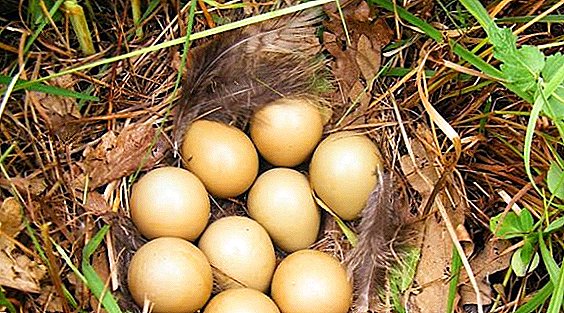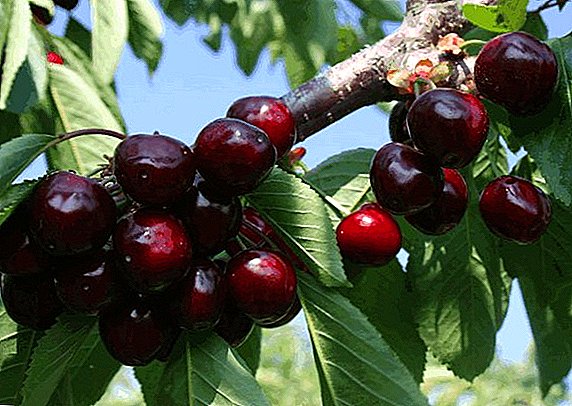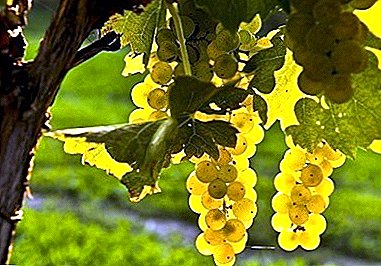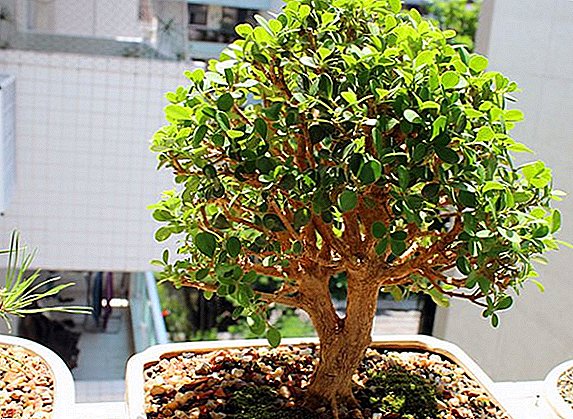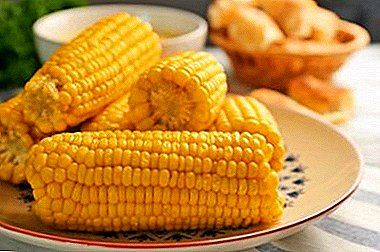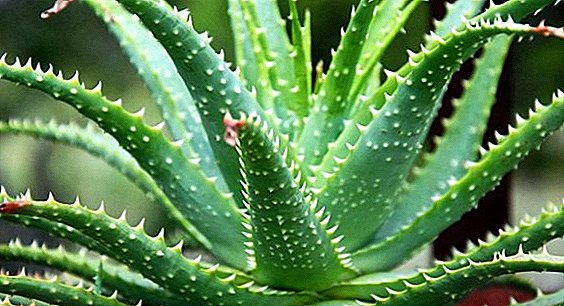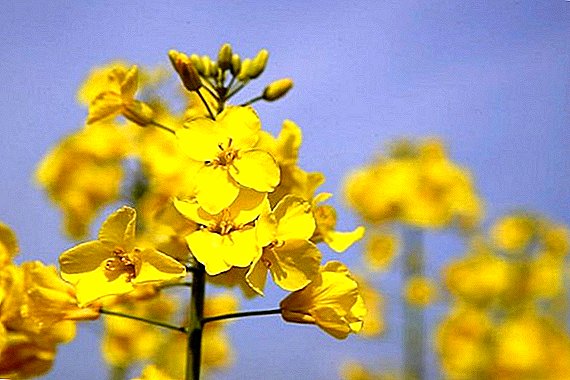
There are many diseases of potato. However, a more dangerous disease is potato cancer. If the potato is affected by cancer, then the damage caused by this disease can be simply catastrophic for the vegetable if it is not taken in advance of preventive measures.
Especially this disease is dangerous for this vegetable, grown in large quantities - both in greenhouses and in the open field. In this case, the agronomist must take drastic measures, otherwise the entire crop may be ruined.
What it is?
Potato cancer (Synchytrium endobioticum) is a very serious disease, the causative agent of which is considered the subject of internal quarantine.
Attention! To protect potatoes from this disease, resistant varieties should be grown, and in addition, if sources of the disease are identified, in the following years not to grow potatoes in this area for at least 3-4 years.
Where and when is formed?
As a rule, the disease violates the potato tuber, stolons, in addition, in some cases, can destroy the stems and leaf blade. With the defeat of stolons - the tubers are not formed. The disease is expressed in the form of tubercles located near the eyes on the tubers. Over time, the tubercles grow and transform into large growths that have a knobby surface.
Causative agent
 The causative agent of potato cancer is the pathogenic fungus Synchytrium endobioticum (Schilb.) Perc, which is parasitic not only in potatoes, but also in other solanaceous tomatoes, physalis, wild steed, and affects the root system of plants.
The causative agent of potato cancer is the pathogenic fungus Synchytrium endobioticum (Schilb.) Perc, which is parasitic not only in potatoes, but also in other solanaceous tomatoes, physalis, wild steed, and affects the root system of plants.
The fungus does not tolerate excessive heat or cold. In the northern and southern regions, where the earth over a long period at a depth of 10 cm freezes to -11 ° C or warmed to + 30 ° C, there is no potato cancer.
The pathogen overrides in the soil in the form of zoosporangia - small cysts with a strong shell, from which zoospores leave in the spring (from one zoosporangia - 200-300 zoospores). In the land of zoosporangia can live up to 30 years.
The optimal conditions for the formation of a pathogen are the soil temperature + 15-18 ° C and the moisture content of the soil is 80%. The tragedy is that potatoes grow best in the same conditions. More than fifty percent of zoosporangia germinate in June - July, during the period of active creation of tubers.
Zoospores originating from cysts can move through soil capillaries. If they do not penetrate into the cell of the host plant for 12 hours, they die. In the cell, the pathogen increases, under the influence of toxins shielded by it, the surrounding plant cells begin to divide intensively, creating growths. After a certain time, new zoosporangia appear in the middle of the growth.
Effects
Potato cancer destroys the entire crop, greatly affecting both the aerial shares of plants and the tuber. Affected tubers have growths that are first light in color, which then darken and turn brown. With the powerful formation of the disease, such growths can be formed not only on the stems and leaves, but even on the flowers of plants. The size of the growths is different - from a small pea to the size of the tuber itself.
In appearance, these growths resemble cauliflower inflorescences. These tubers are not suitable for food and animal feed. Particularly badly, potatoes are affected by cancer in permanent culture, on the backyard plots, where potatoes are grown on 1 plot from year to year.
If the affected bushes are identified at the site, they must be burned and then, for a period of 3 years, they should grow crops not subject to cancer: beets, cabbage, cucumbers, onions.
Danger of illness for humans
Potato cancer, as a disease, is not dangerous for a personhowever, he ruins the tubers, makes them unfit for food. Not because it hurts a person, but because the fruit loses its presentation, rots, deteriorates.
What cultures are striking?
In addition to potatoes, the causative agent of cancer affects:
- tomatoes;
- Physalis;
- wild nightshade;
- other plants of the genus Nourishment.
However, unlike potatoes, they also infect the roots.
Feature description

- First on diseased tubers, near the eyes, white bumps appear, which eventually darken and transform into grayish-brown warty growths, the volume of which may exceed the size of the tuber itself.
- The shape of the growths are similar to cauliflower buds.
- The smallest grayish-brown tubercles appear on the stolons, green ones in the axils of the leaves, in some cases, on the leaves themselves and on the inflorescences (the flowers grow together into one lump).
Cancer never hits the roots of a potato bushFor this reason, the disease cannot be recognized until it is time to dig up the tubers. By the autumn, a significant proportion of infected potatoes rot in the ground, others deteriorate during the first months of storage, infecting the surrounding healthy tubers.
If the summer is hot, the cancer is able to take other forms:
- leafywhen growths on the peel are similar to loose leaves or oyster mushrooms on a tree trunk;
- corrugated - the surface of the tuber becomes uneven, bumpy, crust shrivels;
- scab-shaped - The tuber skin covers a large number of tiny scab sections.
A photo
Photos of potato cancer will help to recognize the problem.



General Landing Protection Principles
If at least one diseased tuber is found on the plot, you should inform the plant protection inspection about this.
Important! Potatoes, cancer patients, in any case it is impossible to apply to food. In order for zoosporangia not to fall into the manure, it is impossible to feed unhealthy tubers in raw form to cattle.
Winter zoosporangia in a thick shell dies only after a minute of boiling at 100 ° C. Infected tubers are preferably disposed of.: science now has not provided a final answer to the question about their safety for people and animals.
Bushes infected with cancer, together with tubers and tops, are either burnt or thrown into the pit at least one meter deep and covered with bleach (or alternatively, they are poured with formalin or kerosene).
Agrotechnical
Only a part of cold or winter zoosporangia "wakes up" annually (approximately 30%). The value of agrotechnical methods of struggle is to reveal as many cysts as possible, and the zoospores, not having found the plant owner, perished. Several methods to achieve a similar outcome:
- In the beds where potatoes grew last year, plant corn. Allocation of its roots contribute to the release of zoospores. In addition, rye and legumes (peas, beans, lupins) clean the soil well.
- In the spring to fertilize the site at the rate of 300 kg of manure. If it is necessary to disinfect the ground in the greenhouse, granulated urea is introduced (for 1 m² - 1.5 kilogram).
- Planting potato varieties that are stable to cancer. In the process of this kind of potato is very sensitive to the influence of zoospores. The affected cell does not nourish the parasite, but dies, the cells around it harden, a pustule forms, into which the dead pathogen is imprisoned. Strong tissues push the pustula out and the wound heals. In case if only such kind of potatoes are planted in the course of 5-6 years, the whole land will be cleared of fungus. However, once every 4 years, the variety must be changed in order to prevent the causative agent of cancer from adapting to it.
On contaminated sites will need to refrain from landing Lorch and Sineglazki, as they are very sensitive.
Chemical
 In order to decontaminate the seeds before planting, the tuber is kept for half an hour in a 0.5% Benomyl solution (Benleit) or in a 1% Fundazole solution.
In order to decontaminate the seeds before planting, the tuber is kept for half an hour in a 0.5% Benomyl solution (Benleit) or in a 1% Fundazole solution.
In order to eliminate the source of infection, the soil is watered with a potent pesticide: 20 ml of a 2% Nitrofen solution per 1 m².
Chemical operation should be carried out only by experts. Within 2-3 years in the treated place it is impossible to grow almost no agricultural crops.
Preventive measures
To avoid contamination of the site, you should:
- observe the principles of crop rotation and plant potatoes in the same place no more than once every 3-4 years;
- do not have other crops of the nightshade next to the potato beds;
- carefully weed out the weeds of the type of bushes around the potato field;
- not to acquire planting material and manure from quarantine zones;
- if a quarantine zone has emerged somewhere nearby, it is appropriate to use planting material of cancer-resistant species.
Conclusion
The synchytrium endobioticum mushroom itself is very tenacious, it can remain in the ground for up to 20 years. Directly for this reason, experts recommend not planting potatoes in infected places, but use only varieties that are resistant to the disease.


